Next summit attempt on Lhotse
Will there be another successful eight-thousander expedition at the end of this fall season in Nepal? Actually, we can answer this question with Yes. Because it already deserves a big round of applause what the South Korean Sung Taek Hong and his team of four Sherpas have achieved so far under difficult conditions in the South Face of 8,516-meter-high Lhotse. In strong winds, the five climbers opened a partially new route up to an altitude of 8,200 meters. Two summit attempts failed: the first at 7,850, the next at 8,000 meters. This weekend Sung and Co. will set off again. If everything goes well this time, they could reach the highest point on Thursday of next week. But this is anything but self-evident.
![]() read more
read more
Climbing for climate protection
Heidi Sand knows how it is to accept a seemingly hopeless fight. “Since my cancer, I have a special relationship with probabilities and chances”, the 49-year-old German climber and sculptor write to me. “You have to believe in yourself and you should use any chance, no matter how small it is.” In 2010, Heidi was diagnosed with colon cancer at an advanced stage. She accepted the fight. Two years later, she climbed Mount Everest. In 2013, she summited Cho Oyu, her second eight-thousander. The following year, Sand and Billi Bierling were the first German women on top of Makalu. Now Heidi is committed to a climate protection project called “25zero”. During the upcoming climate summit in Paris, the Australian adventurer Tim Jarvis and his team want to point out the consequences of climate change for 25 still glaciated peaks at zero latitude, around the Equator. If nothing is done, says Jarvis, no ice or snow will remain on these mountains at the latest in 25 years – therefore “25zero”.
![]() read more
read more
Ueli Steck regains Eiger record
While I got footsore during my “Power pilgrimage for Nepal”, Ueli Steck “ran” fleet-footed through the Eiger North Face (look at the video below). “Speedy Ueli” climbed the Heckmair route – the way of the first ascender in 1938 – solo in just two hours and 22 minutes. Thus, the 39-year-old top climber from Switzerland regained the speed record in this legendary, 1800-meter-high wall that he had lost in 2011 to his compatriot Dani Arnold (2:28 hours). In 2008, Steck had climbed the wall in 2:47 hours. “I had a good track and good conditions”, Ueli said after his tour de force through the North Face adding that it was “a beautiful experience and a great day”.
![]() read more
read more
Heavely aching muscles after “Power pilgrimage for Nepal”
Slowly, very slowly. My feet feel as if they were twice as thick. My legs are a rock-hard muscle package that hurts with every step. I’ve never taken part in a marathon, but I suppose I am feeling like a 42-kilometer-runner on the day after the race – with the difference that more than two marathon distances stick in my bones, literally. From Wednesday, 8 a.m. to Thursday, 7.55 p.m. I hiked 96 kilometers. And I have reached my goal: from Cologne Cathedral on the Way of St. James to Aachen Cathedral within 36 hours, including an overnight stay. Five minutes before the time that I had set before I reached the gate of Aachen Cathedral. The mission “Power pilgrimage for Nepal” was accomplished.
![]() read more
read more
Let’s hike! Power pilgrimage for Nepal
Every kilometer counts. On Wednesday, I will set off for my „Power pilgrimage for Nepal“. The starting point of my sponsored hike on the Way of St James is Cologne Cathedral at 8 a.m. MEZ. My aim is to reach Aachen Cathedral, which is about 100 kilometers away, within 36 hours, including an overnight stay halfway. Meanwhile, the donations for each kilometer that I’ll hike have mounted up to seven euros – due to the information I’ve got directly from you. Maybe the sum will be even higher. Of course more sponsors are always welcome, even after I will have got footsore. 😉 I am pleased with every cent for our aid project „School up!“ which is aimed to rebuild the school of Thulosirubari in Nepal as soon as possible. The “Ralf and Gerlinde School” in the mountains, 40 kilometers as the crow flies from Kathmandu, had been damaged so badly by the 25 April earthquake that it had to be demolished.
Storm and rain showers
The Archbishop of Cologne, Cardinal Rainer Maria Woelki, has wished me “fine weather and above all many sponsors” for my “Power pilgrimage for Nepal”. The latter has already come true, but I’m less optimistic for the former.
![]() read more
read more
UIAA supports stricter rules on Everest
Backing for the Nepalese authorities: The International Climbing and Mountaineering Federation (UIAA) “fully supports the decision to propose more stringent measures for climbers wishing to scale the world’s highest peak, Mount Everest (29,029ft / 8,848m)”, as it said. These measures will include individuals having to prove they have already scaled a peak higher than 6,500 meters, thus eliminating the possibility of novice climbers scaling the mountain. “Everest should become a mountaineers’ mountain again”, said UIAA president Frits Vrijlandt.
![]() read more
read more
Alexander Huber: “Gamblers have never got far in the mountains”
The Huber brothers will continue to go on joint expeditions, but probably not to Latok I. Whereas Thomas Huber raved about the still unclimbed North Face of the 7,145-meter-high granite mountain in the Karakoram when I met him three weeks ago, his younger brother Alexander seems to have definitely written off the project due to their experiences last summer. I talked to the 46-year-old climber at the Alpine Trade Fair in Innsbruck last week.
Alexander, on Latok III, during your acclimatization for climbing the North Face of Latok I, you were are almost blown out of the wall by the blast wave of an ice avalanche. Your brother told me that never before it had been so close. Have you felt like he did?
It was definitely close. We had noticed the serac and therefore placed our camp far away from it. We were lucky that we had dug out a small platform to position the tents perfectly. The small snow edge of this platform has saved our lives. Otherwise we would have been blown away. In this respect, our risk management worked. But it was much, much closer than I ever imagined. And that’s shocking.
![]() read more
read more
The tireless weatherman
“I’m retired, but not tired or unhappy”, says Karl, called “Charly” Gabl. “You should not slow down from hundred to one. As on the road, that would be fatal.” Four years ago, the Austrian meteorologist retired, but the 68-year-old weatherman is still advising many professional climbers during their expeditions in the Himalayas or Karakoram. “I’m doing this voluntarily. For example last summer, I advised the Huber brothers on Latok I where they did not succeed due to the warm weather and were almost killed by an ice avalanche”, Gabl told me when I met him at the Alpine Trade Fair in Innsbruck last weekend.
![]() read more
read more
Siegrist: “Adventure connected to performance”
Who says that there is nothing left to explore! During their expedition in northern India this fall, the Swiss mountaineers Stephan Siegrist, Dres Abegglen and Thomas Senf first climbed three shapely mountains, all of them almost 6,000 meters high: Bhala (also called “Spear”, 5,900 m), Tupendeo (5,700 m) and Te (translated “Crystal”, 5,900 m), each of them on challenging routes. Indian Kashmir is still regarded as an insider tip among climbers. Because of the conflict with Pakistan, the mountain area had been closed to foreign visitors for a long time, until it was reopened in 2003. “The region was simply somewhat forgotten”, Stephan Siegrist tells me. The 42-year-old top climber has become almost an expert for Kashmir in recent years.
Stephan, three first ascents during an expedition cannot be matched by many other climbers. Have you been on a roll?
The motivation was very high. We climbed the first two peaks rather quickly. It is a great advantage that the time you need to acclimatize for altitudes up to 6,000 meters is much shorter, you almost don’t need any time. And the weather conditions were great.
![]() read more
read more
Auer: “Everything else becomes unimportant”
Anyone who has ever climbed a very high mountain knows about the dangers during the descent. Not the dangers of the mountain itself, but of your own body. Suddenly all adrenaline is used up, you feel the pain that you have pushed away during the ascent, you are exhausted, only want to get down quickly and run into danger of losing your concentration. It’s not for nothing that many accidents happen on descent – like on the 6,839-meter-high Nilgiri South in Nepal, where the Austrian Gerhard Fiegl fell several hundred meters into depth on Monday of last week and has been missing since then. As reported, the search for the 27-year-old was meanwhile abandoned.
According to the other two team members, Hansjoerg Auer and Alexander Bluemel, the trio earlier had “successfully reached the summit after climbing through the more than 1,500 meter high South Face”. It was the first climb via the difficult wall where several other expeditions had failed in the past few decades. At the summit they noticed that their friend Gerry was “very exhausted”, Hansjoerg and Alex say. Was it symptoms of High Altitude Sickness? Fiegl’s rapid drop in performance might indicate this. At that altitude, oxygen is pressed into the longs with around 40 percent less pressure than at sea level.
![]() read more
read more
Power pilgrimage for Nepal
“We feel very sad to see ‘Ground zero’ of this huge school building”, says Sunil Krishna Shrestha, representative of the German aid organization “Nepalhilfe Beilngries” in Nepal. As reported before, the devastating 25 April earthquake had damaged the “Gerlinde and Ralf School” in the small mountain village of Thulosirubari so badly that it had to be demolished. The ruins had posed a danger to the children who had continued to play there after the quake. Meanwhile, the destroyed school building, where about 700 students from the region around the village had been taught before the quake, was leveled to the ground. “We were able to recover windows, doors and a few school desks and boards from the rubble”, Arjun Gatraj, the chairman of the school management committee at Thulosirubari, writes to me, adding that the old bricks could not be saved because the IOM (International Organization for Migration) had used heavy machinery to demolish the building.
![]() read more
read more
Search for Gerry Fiegl abandoned
The worst fears turned into sad certainty. The Austrian climber Gerhard called “Gerry” Fiegl will not return. Reiner Gerstner, company spokesman for the outdoor sporting goods manufacturer Salewa, informed me, that the search for the missing 27-year-old was abandoned: “According to information from Nepal there is no longer any hope to find Gerry still alive.” In recent days, up to one and a half meter of fresh snow had fallen in the Annapurna region, Gerstner said. Last week on Monday, on the descent from the 6,839-meter-high Nilgiri South, Fiegl had fallen several hundred meters into depth. Previously Gerry – along with his compatriots Hansjoerg Auer and Alexander Bluemel – had first climbed the difficult South Face of the mountain where several expeditions had failed in past decades. “So an until then successful expedition came to a tragic end”, said Gerstner. “We mourn the death of a friend. Gerry was one of the best.”
![]() read more
read more
Mingma Sherpa: “It was my worst mistake”
No trace of euphoria. On Wednesday last week, Mingma Gyalje Sherpa reached – as reported in my blog – the 6,685-meter-high summit of Chobutse in Rolwaling Valley in Nepal, solo climbing and for the first time via the West Face – a milestone in the history of Sherpa climbing. But instead of being cheerful the 29-year-old is simply happy that he survived his solo ascent.
Mingma, you have already been on top of Mount Everest, K 2 and five other eight-thousanders. How challenging was your solo ascent on Chobutse?
I have climbed Everest with bottled oxygen and the other six 8,000-meter- peaks without the use of oxygen. When I climbed these high mountains, I did it with partners and on routes with fixed ropes. But a solo ascent means climbing alone in free style, there isn’t any fixed rope or climbing partner to save you if you make a mistake. A mistake means the end of your life. So it is itself challenging. It took me three years to decide to go for a solo climb. Finally, I made it this year. Climbing Chobutse was my worst decision and mistake. I almost lost my life. After my summit success, I spent two nights and days without food, water or tent. I spent two threatening nights and a day at the same place in a whiteout waiting for the weather to clear up. My only satisfaction is that I made it to the summit, though it was the hardest climb of my life.
![]() read more
read more



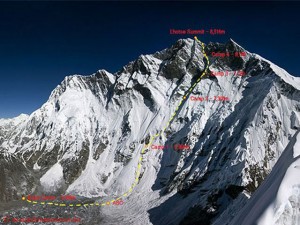

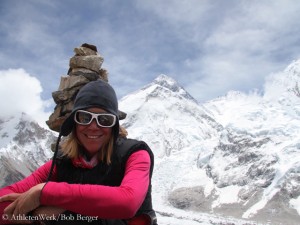
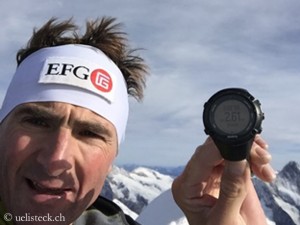
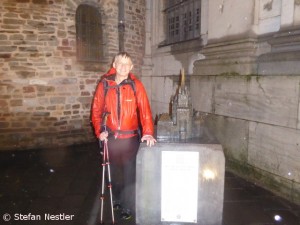

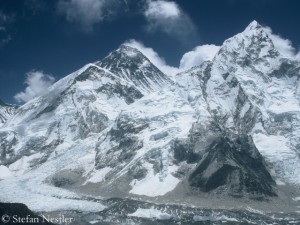
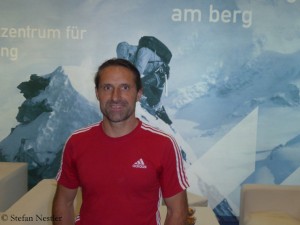
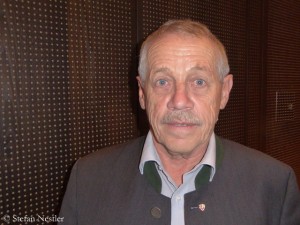
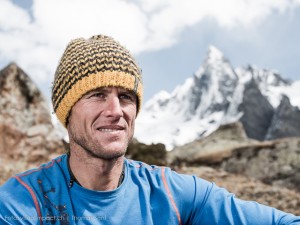

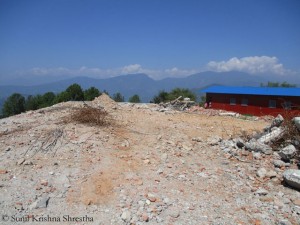
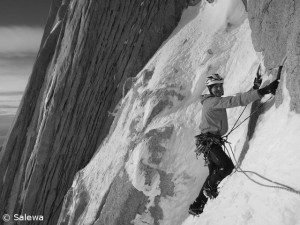
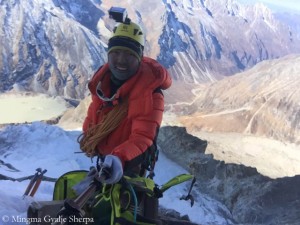

Feedback